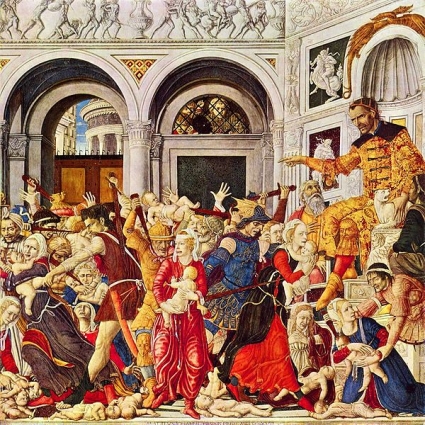You are currently browsing the tag archive for the ‘writing’ tag.
'The Massacre of the Innocents at Bethlehem' by Matteo di Giovanni
Nowadays it seems as if our children are either being targeted by marketing men or demonised by the media, but we once celebrated them on at least one day of the year.
I’m not a Christian, but I do have a soft spot for the holidays, traditions and rituals which used to make the English year so much more interesting. I can’t help feeling that we would help both our community and our sanity if we slowed down and observed some of the old customs – especially when they offer a marked change to our everyday expectations.
Childermas, also known as’ Cross Day’ or ‘Holy Innocents Day’, commemorates the time when, according to the Bible, King Herod ordered the massacre of all children under the age of two in Bethlehem in an attempt to thwart the prophecies surrounding the infant Jesus. Matthew 2:16-18…
When Herod realised that he had been outwitted by the Magi, he was furious, and he gave orders to kill all the boys in Bethlehem and its vicinity who were two years old and under, in accordance with the time he had learned from the Magi. Then what was said through the prophet Jeremiah was fulfilled: “A voice is heard in Ramah, weeping and great mourning, Rachel weeping for her children and refusing to be comforted, because they are no more.”
The tragic nature of this event, commemorated in England on December 28th, led to the belief that the day itself was unlucky; so much so that the day on which Childermas fell would be regarded as unlucky throughout the year – with Childermas falling on the dreaded back-to-work Monday this year a lot of people will sympathise with this belief. It was said that anything started on this day would be doomed to failure. A popular saying for failed ventures was “It must have been begun on Cross Day!”
But Childermas was also a time to celebrate children and childhood. And it is for this reason that I believe we should revive the custom.
On December 28th children were given a degree of freedom that was denied them the rest of the year. They were allowed to play in churches and were not allowed to be chastised by anyone (Daily Mail* readers may think that this is a normal state of affairs for children in the 21st Century, but Western children live in a culture which is so physically and psychologically restricting that it’s no wonder that some of them go off the rails – maybe they need to be allowed to be children rather than consumers?). Giving our children free rein on at least one day of the year would not only help them develop a healthy taste for liberty, it would remind us of the freedom that we ourselves have lost.
Spend a day letting your children call the shots and I guarantee that you will have a day to remember. Their pace of life is as hectic as our own, but it is far more human – where our day is ‘filled’, there’s is ‘fulfilled’ 🙂
As his finest biographer, Richard Ingrams observed, ‘William Cobbett urged parents to make their childrens lives as ‘pleasant as you possibly can’:
I have always admired the sentiment of ROUSSEAU upon this subject. ‘The boy dies, perhaps at the age of ten or twelve. Of what use, then, all the restraints, all the privations, all the pain you have inflicted upon him? He falls, and leaves your mind to brood over the possibility of you having abridged a life so dear to you.’ I do not recollect the very words; but the passage made a deep impression upon my mind, just at the time, too, when I was about to become a father … I was resolved to forego all the means of making money, all the means of making a living in any thing like fashion, all the means of obtaining fame or distinction, to give up everything, to become a common labourer, rather than make my children lead a life of restraint and rebuke.’
If we, for but one day, can match Cobbet’s resolve, then we may well do our children the greatest service any parent can hope for, we may instil in them an independence that so many of us will never get to enjoy.
HAPPY CHILDERMAS!
*The Daily Mail is a bitter and vitriolic daily British newspaper which is so authoritarian in its philosophy that it once described the leader of the black-shirted British Union of Fascists (BUF – how homoerotic is that?), Oswald Mosley, as “a leader of genius”.
Once upon a time, in the golden age of chivalry, fair play and feudalism, there was a Knight who’s name was Gnord.
Brave Sir Gnord, as he liked to call himself, was Lord of Grendale, in the Kingdom of Ethel. Lord Gnord did not win his lands through bravery; he hadn’t even owned a suit of armour before he became Lord of Grendale. Nor did he attain his estate through popularity; old Gnord could barely raise a smile, let alone a band of loyal followers. In truth Sir Gnord was granted the lands of Grendale and the title that went with it because nobody else wanted the job. Every knight in the court of King Bifron was afraid to go to Grendale, because in Grendale there were monsters.
Grendale was a borderland so wild that much of it wasn’t even on the map. The earth was barren and farming was poor and the revenue from the taxes was hardly worth the trouble, but Grendale was the only thing that stood between Bifron’s kingdom and the Great Wastes, and the king knew that he must be seen to be in control of this region if he was to discourage the conquering forces of the Dark One. So he decreed…
“Whomsoever shall become Lord of Grendale shall be awarded 10,000 gold pieces per annum.”
There were no takers. So he further decreed…
“Whomsoever shall become Lord of Grendale shall be awarded 10,000 gold pieces per annum and my youngest daughter’s hand in marriage.”
Still no takers. And so he even further decreed…
“Whomsoever shall become Lord of Grendale shall be awarded 10,000 gold pieces per annum, my youngest daughter’s hand in marriage and a go in my fabulous golden carriage.”
At this Gnord stepped forward. He actually worked in the king’s Counting House and was not a knight, but he had always admired the king’s fabulous golden carriage.
“Your highness, if I may be so bold,” said Gnord, though he had never actually been bold in his life. “If no brave knight will come forth, then perhaps a humble accountant may be called upon to save the day?”
And so it was that ‘Gnord the Money Counter’ became ‘Sir Gnord of Grendale’, faithul subject of Bifron the Methodical, King of the Ethelish.
The first thing Gnord did after receiving his knighthood was to go for a ride in the king’s fabulous golden carriage (which turned out to be less fabulous – or indeed golden – on the inside as it was on the out). The second thing Gnord did was build ‘Grendale Castle’; an imposing fortress with a huge tower. And from the top of this tower Gnord looked out over his lands, lord of all that he surveyed.
One day some peasants from the furthest border region came to his castle with desperate news.
“My Lord, my Lord. We have desperate news.” they said. “A Ferocious Fangtoothed Fargleblaster has come to Grendale and it is about to attack our village!”
Lord Gnord stood up and placed his hand on his hip as if to draw a sword. But when he held his hand aloft all that was in his palm was a telescope.
“Come peasants. To the tower.” he bellowed.
Sir Gnord – followed by his advisers, his priests, his bodyguards, his stylist and the peasants – slowly climbed the stairs to the top of the great tower. Gnord raised the telescope to his eye and peered southward to the borderlands. Gnord had built his castle as far from the border as possible, so in truth he would have needed a spy satellite rather than a spyglass to see the border (which, of course, wasn’t possible in a time when the stars were still little more than holes in the dome of heaven). But Gnord made a play of studying the far off horizon. For a moment or two he ummmed and for a moment or two more he ahhhed. And then he boomed…
“Thou art mistaken peasants. That is no Ferocious Fangtoothed Fargleblaster.“ he declared, closing the shiny brass telescope with a sharp snap. “That is a Devilsome Thangaroo.”
Now on a scale of 1 to 10 (with ’10’ being a “Giant, hell-spawned, nine headed hydra with nine fire-breathing, fang-filled mouths and eighteen eyes that shine red like hot coals; which dribbles hot lava-snot from seventeen nostrils (one is blocked with some rather nasty black bogeys) all over you as it slowly tears into your flesh” and ‘1’ being a “mean, but small, barking dog”) a Devilsome Thangaroo would probably score a 7 or 8, whereas a Ferocious Fangtoothed Fargleblaster is more like a 9. So the peasants, being simple and loyal to a fault, were put at ease by this news.
“Thank you, oh wise and insightful Lord Gnord.” they bowed.
And so the peasants returned to their border village where they were promptly eaten by the Devilsome Thangaroo (which looked suspiciously like a Ferocious Fangtoothed Fargleblaster) along with their kith, kin and livestock.
The next day more peasants arrived at the castle with grim news.
“My Liege, my Liege. We have grim news.” they implored. “The Devilsome Thangaroo has now come to our village. And it looks mightily miffed!”
So Sir Gnord – followed by his advisers, his priests, his bodyguards, his stylist and the peasants – made his way to the top of the great tower and again raised the spyglass to his eye. This time he could make out a tiny black shape on the horizon, which he assumed to be the beast in question. It was moving among some tiny white squares, which he assumed was the village in question. For a moment or two he ummmed. For a moment or two he ahhhed. Then he snapped the spyglass shut.
“It seems I was mistaken.” he declared.
The advisers, priests, bodyguards, stylist and peasants all gasped in unison; were they actually under attack from a Ferocious Fangtoothed Fargleblaster after all?
“What a fool of a tyrant I am.” contunued Lord Gnord. “That is no Devilsome Thangaroo, tis a Gargling Ganoot as I live and breathe.”
A Gargling Ganoot would have to be suffering from tooth ache to score higher than a 6.5 on our monster meter, so the peasants were delighted. With a spring in their step and a blush on their cheeks they returned to their village and to certain death.
Over the next few days peasants from villages that stood ever closer to the castle came and went; each reassured that the beast was not as terrible as they thought. What was once believed to be a Ferocious Fangtoothed Fargleblaster was downgraded each time the peasants paid a visit. One day it was a 5 point scoring Needlenosed Higglesniff, the next it was a Beastly Blattwort, which was barely a 4 by anyone’s reckoning.
As the creature inched closer to Grendale castle it became easier to see with the naked eye and Lord Gnord’s advisers began to ask questions.
“Sire, I may be wrong, but I’m sure that a Pitted Dragulsnuff does not stand thrice as high as a rowan tree.” said one.
“I’m quite certain that an Evilish Ugan cannot fit a horse AND rider in it’s mouth in one bite.” said another.
And so it went until Sir Gnord was forced to address his entourage…
“Dost thou think that it would be better to tell the peasants the truth? Would widespread panic and prayers really be preferable to an orderly death? Verily, I say unto you that truths should be spun like braies* in a washtub and then rolled through mangles until they better fit the desires of the wise and worthy. What need have the peasants for truth? I shall paint a world that gladdens the weak hearts of my people; not to misinform them, but to protect them!” bellowed Lord Gnord banging his fists on the castle’s large oak dining table. “Henceforth, any that question my judgement shall suffer the rack before feeling the bite of the executioner’s axe and my steel-clad boot up their never regions!”
So when a Nibbly Fluff (rated 1.5 on the monster meter) smashed down the outer walls of Castle Grendale, nobody mentioned the fact that a Nibbly Fluff should only have the strength of a spring lamb. Likewise when the Nibbly Fluff tore Sir Gnord’s personal bodyguard to shreds nobody took the trouble to point out that this particular Nibbly Fluff has monstrous claws rather than the usual mole-like paws of it’s brethren. And when the Nibbly Fluff flapped a pair of monstrous leathery wings – that it really shouldn’t possess – and took to the air – like it really shouldn’t do – nobody bothered to ask why a burrowing animal was floating high above their heads like a fart upon a breeze.
“I think it wants to play.” shouted an adviser as he slid down the monsters throat.
“So it would se…” said the stylist as it bit off his head.
Even when the monster breathed fire into the tower, making it glow like a bonfire log, nobody spoke out of turn. How could they? For every man and every beast but Lord Gnord himself was reduced to ash and ruination.
Presently the Nibbly Fluff stood before a cowering Sir Gnord pausing only to decide whether it wanted to eat him or light him up like a candle. It chose the latter. And as Gnord’s armour melted into his soft flesh; and as Gnord’s 10,000 gold pieces became a trickling yellow stream; and as Gnord’s last breath was sucked from his lungs by the heat of the Nibbly Fluff’s fearsome breath the knight said…
“Maybe I am mistaken after all? For I am sure that Nibbly Fluff’s are not known for their halitosis.”
THE END
Anti-©
This is an abridged version of a story that will appear in a forthcoming project called ‘Tales for Our Times’. As such it can be copied, quoted, altered and generally plagiarised as anyone sees fit.
*A braies is a medieval undergarment.
Rudgate Brewery of York has won first prize at the CamRA ‘Great British Beer Festival‘ for their excellent Ruby Mild.
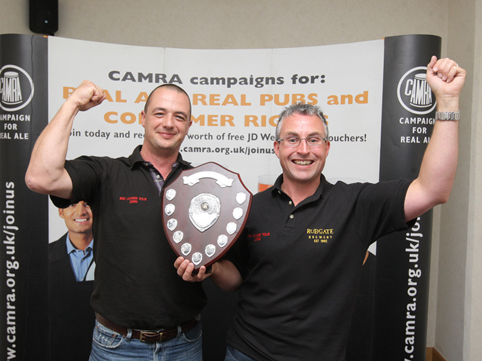
This is great news – not least because it will make it easier to by this wonderful brew 😉
Well done Rudgate!

Not all strange tales begin with the words “Long, long, ago”. The Wisbech ‘Toadmen’ were still in existence between 1918 and 1938 and are more of a memory than a myth.
The term ‘Toadmen’ does tend to conjure up images of monsters from b-movies or comic books; and indeed toadmen have featured in Stan Lee’s ‘The Incredible Hulk’ and Henri Verne’s ‘Bob Morane’ comic strips.
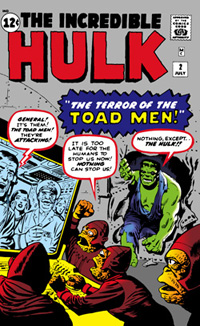
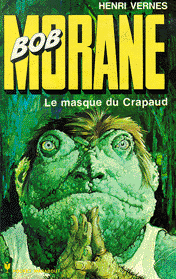
But the Cambridgeshire Toadmen were not monsters, they were normal men with the gift of controlling horses; a kind of equestrian Cesar Millan.

Cesar Millan: The Dog Whisperer
They may have been the fenland’s Dr Dolittles, but they did more than just talk to their animals. It is said that a horse that was in the control of the Toadmen would remain completely motionless and would resist all attempts to make it move. But these were no mere horse whisperers, indeed their name itself points to a much darker secret.
The name ‘Toadman’ is said to derive from their elaborate rituals. One account describes them catching a live toad which was then pegged to an ant’s nest. The ants woul eat the toad’s skin and flesh leaving only it’s bones.

The Toadmen would then keep the bones in their pockets until they were completely dried out. Then, on the night of a full moon, they would take the bones down to a stream and place them in the water where the bones would let out a horrifying scream. Soon a certain bone would become dislodged from the skeleton and begin to float upstream. The Toadmen would fish this bone from the stream and use it to make a strange herbal brew; this would give them their power over horses – and the name ‘Toadmen’.
There is historical evidence to show that the services of Toadmen were employed on farms around Cambridgeshire to help with breeding and other farming matters. It’s likely that they drew their ‘powers’ from an esoteric knowledge of herb-lore and that the use of ritual helped to keep their knowledge secret. Secret knowledge helps to grant a certain amount of power to those ‘in the know’, but it’s also worth remembering that people who used traditional, pagan remedies would once have been persecuted by the Church for their beliefs.
The demise of the Toadmen is a sad reminder that we can sometimes forget as much as we learn. It would have been interesting to see what modern pharmacology could have done with the this fenland ‘magic’.

Image from Fantasy Horse Wallpaper
THE END
Living the Legend…
The best way to understand and enjoy British Folk-Tales is to visit the places which inspired them. Cambridgeshire has so much to offer that it’s hard to decide where to begin; one good place to start is here. Wisbech is known as the capital of The Fens, an area drained by Dutch engineers in the 17th Century which offers nearly a million acres beautiful black soil and wildlife-rich waterways.
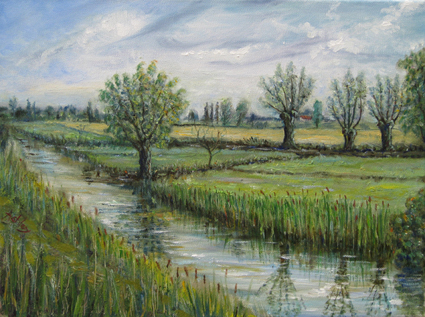
'A wet morning in the fens' by Ashley Baldwin-Smith
This article was adapted from information provided by “The Lore of the Land: A Guide to England’s Legends, from Spring-Heeled Jack to the Witches of Warboys.” (Penguin Books, 2005).
One of my favourite places anywhere on this beautiful Isle of Albion is the stretch of Yorkshire coastline at Bempton Cliffs, between Bridlington and Scarborough. One of the best ways to enjoy this landscape is by walking the cliff-tops along the Headland Walk. This walk is usually pretty accessible – though I did run into a couple of problems this year – unfortunately this is not the story for much of England’s coast . Admittedly coastal erosion and unseasonably wet summers – which are great for rapid plant growth – have not helped, but coastal walkers in England routinely have to face barbed wire, farm machinery, cattle, unkempt paths and even live ammunition. Thankfully all this is about to change…
New maps have been released that detail 2,748 miles of coastal paths that Natural England is preparing to open up to shoreline walkers.

Picture from The Guardian
The Guardian reports…
Maps drawn up for the marine and coastal access bill, which is expected to become law in November, trace a vivid red and green snake round the 2,748 miles of mainland coast. Each of the red sections is either private, inaccessible or dangerous.
The audit by Natural England and shoreline councils is part of an effort to make all of England’s coastline accessible to walkers. “There will be 10 years’ work to be done before we can walk the whole way,” said Paul Johnson, coastal access manager for Natural England, “but we reckon that the first rights of way between major seaside towns could be in place by 2013.”
Which is great news for walkers 🙂
Apart from the landscape and bird-life Scarborough is also close to my heart because of the beautiful ballad, Scarborough Fair. This song appears to derive from an older (and now obscure) Scottish ballad called ‘The Elfin Knight‘; a version of which appears on Kate Rusby’s 2005 album, ‘The Girl Who Couldn’t Fly’.
Scarborough Fair was itself made famous by Simon & Garfunkel…
In the Blue Corner… ‘More of More Hall’…
Nowadays if you were to pay a visit to the ‘House of Lords’ at Westminster in London, chances are that you would not feel particularly intimidated. You may feel a whole range of emotions depending on your political persuasion, but fear is unlikely to be one of them. Today’s ‘Lord’ is usually an old aristocrat, an ageing politician, a retired sport’s star or someone who is just plain rich. But this was not always the case.
The Lords of old were men of war; fierce and thegnly, they knew a thousand different ways to make you hurt. For some they were tyrants and conquerors, for others they were protectors and peacekeepers; but to one and all they were terrifying. And the most terrifying Lord ever to walk England’s green grass was the man they called More of More Hall.
New (old) Lords
Old (young) Lords
Moor Hall stood in in a valley between Wharncliffe Woods and the village of Bolsterstone near Sheffield, in the county which is presently called South Yorkshire. This region has always been a wild borderland; it was once the place where the great and legendary forests of Barnsdale and Sherwood merged together; 2000 years ago the Fourth Cohort of Gauls, a division of the invading Roman army, were stationed nearby to hold back the Celtic Britons who had been forced westward; 1000 years ago it lay on the border that separated the Saxon kingdoms of Mercia and Northumbria. The last Saxon Lord to control the region was Eorl (Earl) Waltheof who was beheaded in 1076 when he took part in a second rebellion against the Norman tyrant, William the Bastard (aka William the Conquerer), who had invaded England in 1066. After Waltheof’s death Sheffield was placed in control of Sir Roger de Busli who’s castle stood at Tickhill, near Doncaster. De Busli played a major role in one of the most terrible episodes in English history, the Harrying of the North.
And throughout this time, from the Romans to the Normans, it was the battle-axe rather than the ballot-box which decided the fate of the people. Needless to say it took a tough cookie to be a Lord in such a wild region…
More of More Hall was definitely a tough cookie. He was said to be a foul-mouthed, hard-drinking, womaniser; a mountain of a man with a reputation to match his stature. Legend has it that when he was young he was thrown from a horse. The villagers laughed to see a great knight beaten by a mere mare. This angered Moor of Moor Hall, so he grabbed the animal by it’s main and tail and he swung it around and around and around until it was dead. Not satisfied with killing the horse he had it cooked and he ate it as if it were nothing more than a Southern-Fried chicken. He took bite after bite after bite until all that was left on his plate was the horse’s head – now that’s ‘finger lickin’ good’! Nobody laughed at More of More Hall after that.
WWF/WWE 'Kane' - he'd be no match for More of More Hall!
In the Red Corner… ‘The Dragon of Wantley’…
If you feel sorry for More’s horse then perhaps you’d also like to spare a thought for the poor people of nearby Wantley; for a great wurm had made it’s home in the crags that surrounded their village.
The Dragon of Wantley was a truly horrible beast; in it’s cavernous mouth it had four and forty iron fangs the size of soldiers bayonets and twice as sharp; all over it’s monstrous body were iron scales as wide as dinner plates and twice as thick; it’s wings were like that of a bat only of much greater size and twice as leathery; and it’s fearsome fiery breath was as hot as sulphur and twice as smelly.
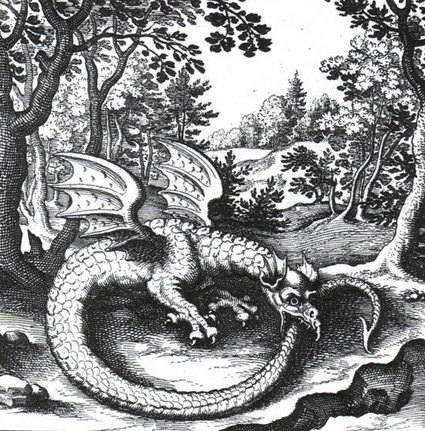
It is said that the beast ate most of Wantley, caring not for what it chewed. To satisfy it’s monstrous appetite it would devour all that stood in it’s way – meat, veg and mineral! The wurm ate cattle, trees and people as if they were nowt but Pot Noodles; as the famous poem says ‘even houses and churches were to him geese and turkeys‘.
3 Kids and some puppies = a snack for the Dragon of Wantley
The only things that the dragon could not digest were a few boulder sized stones which it spat out in disgust. These can still be seen today…
stones at Wharncliffe Crags
The villagers fought bravely, but try as they might they could not wound the beast for it’s iron scales. Their efforts merely angered the dragon and so anything that was not eaten was burnt to a cinder out of spite. The villagers could only watch in horror as their once beautiful Wantley was slowly reduced to dust and devastation.
Let’s get ready to rumble…
In desperation the villagers turned to More of More Hall; for he himself was more beast than man. They told him of the dragon and how it was impervious to injury. They implored him to help and said that he could have anything his heart or head desired.
It turned out that More of More Hall desired a smiling, raven-haired, maid of sweet-sixteen with snow white skin and lips of cherry red to anoint him with oil at night and dress him in the morning – and to think I have trouble asking for a pay rise!
a raven haired beauty by Charlsie Kelly
The villagers agreed to his terms.
More of More Hall knew well the legend of Achilles which teaches us that nothing that walks this green earth is truly impregnable; everything that takes breath has a weakness. He did not know the dragon’s weakness, but he knew a way to find it. He took his knightly armour to Sheffiled and bade the town’s skilled smithies – the best in the world – to cover his metal suit with 6 inch long spikes of steel. It is said that when the smith’s had finished with More of More Hall’s armour it was so spiky that he looked like a hedgehog or some Egyptian porcupig.
a porcupig - not to be confused with Porky Pig
And so it was that a spiny More of More Hall rode bravely into battle and – thought most – to certain death.
Seconds Out, Round One…
If you, like me, are a bit of a nerd then you’ll be pleased to hear that brain is a better asset in battle than brawn (though both is obviously better) – and More of More Hall knew that this dragon was more stinker than thinker. The wurm’s first dumb move was to try and and bite a steel spiked knight. The 6″ spikes bit back and for the first time in it’s life the dragon felt pain. It was so angry that it spun around six times, drew back it’s beastly head and took a large intake of breath.
More of More Hall knew the dragon’s mind and he jumped into a nearby well just as the monster spewed fire from it’s aching mouth. The water in the well boiled and bubbled and the knight was tossed around like a fart in a jacuzzi, but he remained unburnt and alive. Enraged the dragon plunged into the water and beast and man entwined, locked in mortal combat.
The water doused the monsters fearsome breath and the spiky armour saved the knight from being bit; so beast and man – albeit a beast of a man – were evenly matched. For two whole days the battle raged with neither gaining the upper hand. And then, by chance and perseverance, More of More Hall found the dragon’s Achille’s heel. For the sake of taste or modesty some storytellers would have you believe that the dragon’s weak spot lay at it’s throat or in the small of it’s back, but I, for sake of accuracy in case you were ever to meet such a beast in the flesh, will tell the tale in it’s original form. Tired and close to death More of More Hall mustered all his remaining strength and kicked as hard as he could landing his spiky foot square on the dragon’s arse. “Murder, murder”, the dragon cried, “Alack, alack, for grief. Had you but missed that place, you could have done me no mischief.” But it was too late for the dragon who’s life was undone by a boot to the bum – and so from that day to this giving a good whooping is known as ‘kicking ass’.
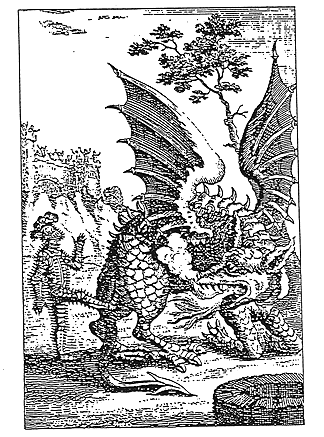
Six times more the beast spun around and then, with a gasp of breath and a puff of smoke, the dragon promptly died. So ends the tale of the Wantley Wurm and the valiant knight known as More of More Hall.
The End
Living the Legend…
The best way to understand and enjoy British Folk-Tales is to visit the places which inspired them. The lair of the Dragon of Wantley is situated at Wharncliffe Crags, North of Sheffield and the Peak District National Park (in 1951 the Peak District was designated Britain’s first national park). Anyone with the courage of a knight – and good walking shoes – can visit the beast at Wantley Wood, an important conservation site run by the Woodland Trust. Some 16 miles East of Wharncliffe is the town of Conisbrough who’s castle and surrounding countyside inspired Sir Walter Scott’s classic heroic tale, “Ivanhoe” – which mentions The Dragon of Wantley in it’s opening chapters. Another dragon was said to reside in nearby Conisbrough Cliffs and an observant visitor can still find the rocks that were stained red by the dragon’s blood; but that is, as they say, another story 😉
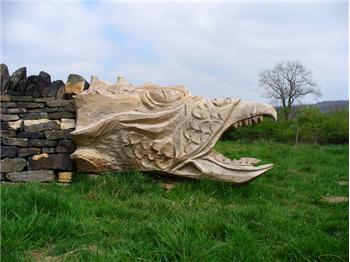

This version of the story was adapted from the Yorkshire poem and folk-tale known as ‘The Dragon of Wantley’ as told in David Clarke’s “Strange South Yorkshire” (Sigma Press, 1994) and Katherine Briggs’ “British Folk-Tales & Legends” (Routledge Classics 2002).
A clean version of the 17th century poem can be read here and the story behind the story can be found here. Bear in mind though that the crest of the Anglo-Saxon More family was a dragon and this pre-dates the poem by over 600 years – so what is the real truth behind The Dragon of Wantley?




